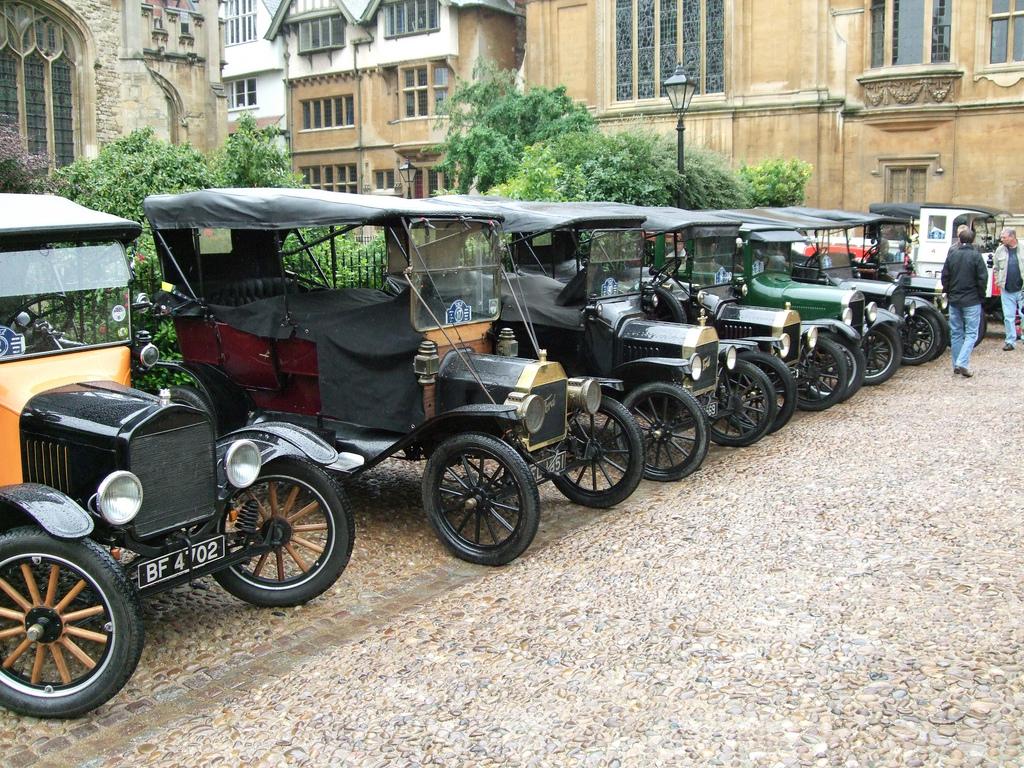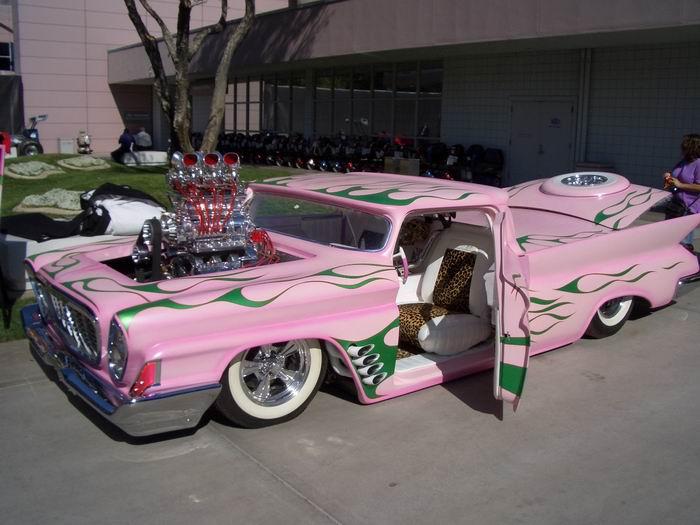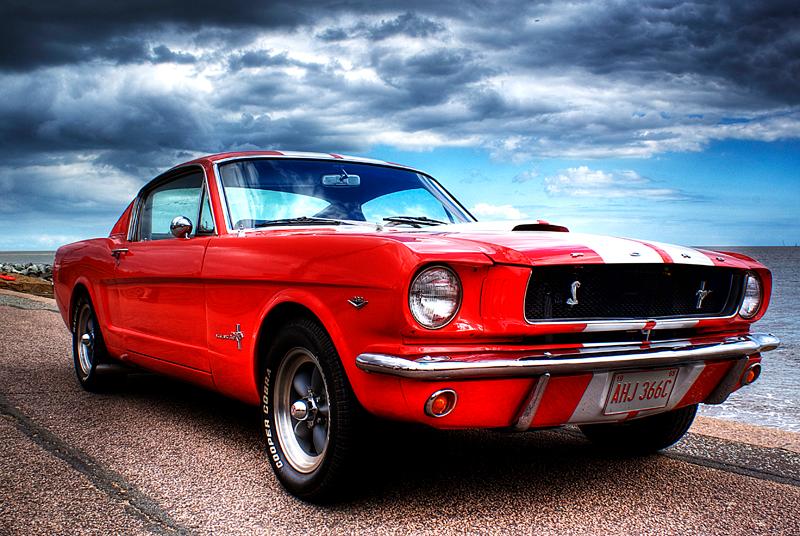American Car Craze

American Car Craze
The Industrial Revolution in America - the Big Change - happened mainly in the fifty years between the Civil War (1861-65) and World War I (1914-18). In the years after the Civil War, the United States was still a fairly "raw" society with few laws and regulations. Few people bothered about certificates and proof of education in the various trades. Therefore, it was easy to start and run a business. Opportunities were everywhere.
The motorcar is an invention that fits Americans to a tee, although a German built the first car. It agrees completely with their sense of individualism and their wish for freedom of choice and freedom of movement. For these reasons the automobile is a perfect symbol of the American way of life. And no American is more closely linked with the car than Henry Ford.

Efficiency was the keyword to Ford. By specializing his workers - giving each a special task to do - he was able to cut down on the time it took to produce a car. Ford's time studies moved industrialism into a new phase by introducing new key concepts: automation and efficiency. It was the overenthusiastic confidence in this new system that Charlie Chaplin parodied in his memorable movie "Modern Times" in 1936.
Many social scientists claim that the biggest problems in the USA today are caused by the private automobile: traffic jams, city development problems, fuel shortages, shaky family economies, air pollution, and other environmental hazards. These are such difficult problems to solve, they say, because they are all related to the motorcar. And they are right that the car has become a natural part of the American lifestyle; it is the hub which American life turns on.
The car was also behind the great move of the 1950s and 1960s, from city to suburb. "The second car" made that possible, giving the suburban housewife mobility, the ability to do things on her own while her husband used the family's "first car" to get to work.

In the 1950s the car became almost an idol, an object of worship, especially among young Americans. The drive-in movie theater became an important place of entertainment, and the car was also a convenient place for socializing, dating, and "necking". Also, as a vital part of the growing teenage culture, the car was often used in individual "tests of manhood" and in gang rivalries.
The cars of the fifties typically had ballooning fenders, big tail-fins, and radiator caps in the shapes of airplanes or birds. Engines were big and burned a lot of gasoline.
The car replaced railroads and streetcars in many places, mainly because of the freedom it seemed to offer. Today the tide has turned. Many American cities are now turning to the streetcar again, building light rail systems. In these systems, electric streetcars operate in special lanes separated from other traffic.
In California, Sacramento, San Jose and Los Angeles have built light rail networks. Actually, Californians voted for an extra tax on gasoline to pay for some of these projects. The main reasons for this are the problems created by the automobile. In Los Angeles heavy smog is a health hazard, and daily traffic jams add another hour to people's workday. Large parts of downtown L.A. are in fact gigantic freeway "interchanges", with roads crossing each other at three or four levels, which is hardly a pretty sight. Other American cities are acknowledging the advantages of light rail networks. In 2008 Phoenix, Arizona opened theirs. As of 2009, there are several under construction, for instance in Norfolk, Virginia and in Seattle, Washington.
In the smaller cities these problems are not so serious, but even there more and more people are beginning to understand that basic changes in "the American way" are called for. So far so good, but changing one's lifestyle is something else. In 2005, 77% of the labor force drove their car to work alone every day. (US Census Bureau).
Comprehension
- What was the name of the car by Henry Ford which revolutionized the automotive industry?
- In the 50’s and 60’s the “second car” became part of an American household. Who used this car and for what purpose?
- What environmental issues do cars bring and what are some options to curtailing these concerns?
- Today many Americans have three and four cars. Try to explain America’s fascination with cars and why they need so many?
Competition
How many American car manufacturers can you name? Make a list of as many American cars (name/model) that you can think of. Which group/student can name the most?
Vocabulary
Make a table with the following words in your text editor and fill it out. NB: You have to click on the name ”Henry Ford” in the text to find some of the first words.
English | Translate into Norwegian | Make a sentence using the word | Possible synonym |
|---|---|---|---|
Tee |
|
|
|
Lifespan |
|
|
|
Apprentice |
|
|
|
Sawmill |
|
|
|
Inventor |
|
|
|
Self-taught |
|
|
|
Assembly line |
|
|
|
Concepts |
|
|
|
Efficiency |
|
|
|
Confidence |
|
|
|
Scientists |
|
|
|
Hub |
|
|
|
Worship |
|
|
|
Necking |
|
|
|
Rivalries |
|
|
|
Fenders |
|
|
|
Tail-fins |
|
|
|
Gasoline |
|
|
|
Streetcars |
|
|
|
Smog |
|
|
|
Health hazard |
|
|
|
Acknowledging |
|
|
|
Advantages |
|
|
|
- Vocabulary(DOCX)
Dymond about Cars and Driver’s Licence
Most young people dream of getting their licence and maybe having their own car. This will give them the ultimate feeling of freedom and mobility. In the USA it is a matter of course to have a licence and a car since individual freedom and mobility are so basic elements of the American way of life. Besides, public transport is rather poor. Listen to what Dymond has to say about the matter – and what her dream car will be.
Dymond Talking about Cars Driver’s License
- Does Dymond have a licence?
- What does she say about road accidents?
- Does she think it is easy to get a driver’s licence in the USA?
- What is Dymond’s favourite car?
- In some states in the USA you can get a trial licence at fourteen. How do you feel about that?
Research
- Do you have a favorite American “dream car”? Make a poster/advertisement for it based on pictures and information you find on the internet (engine, color, interior, extras).